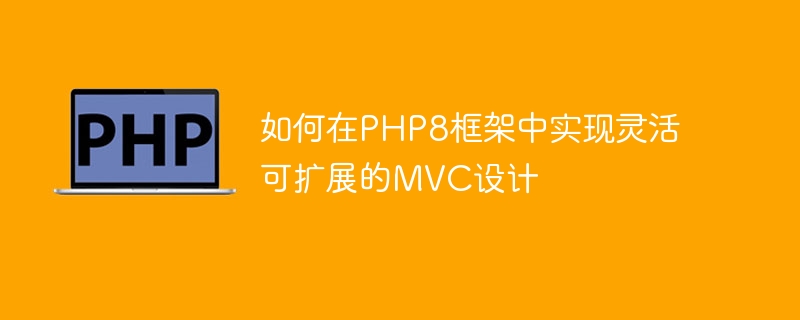

How to implement flexible and scalable MVC design in the PHP8 framework
With the rapid development of the Internet, the development of Web applications has attracted more and more attention. In order to improve development efficiency and code maintainability, adopting the MVC (Model-View-Controller) design pattern is a wise choice. In this article, we will introduce how to implement a flexible and scalable MVC design in the PHP8 framework.
MVC design pattern divides the application into three main components: Model, View and Controller. The model is responsible for handling data logic and database interaction, the view is responsible for presenting data to the user, and the controller is responsible for processing the user's request and returning the corresponding view.
In the PHP8 framework, object-oriented programming can be used to implement the MVC design pattern. First, you need to create a base controller class that will serve as the parent class for other controllers. The base controller class should contain some commonly used methods, such as methods for handling user requests and methods for loading views.
Next, create model classes, each model class corresponds to a table in the database. The model class should contain methods for interacting with the database, such as methods for inserting, updating, and deleting data. In addition, you can also define some data-related business logic in the model class.
Then, create controller classes, each controller class corresponding to a functional module of the application. The controller class should contain methods to handle user requests, get data from the model class, and select the appropriate view to present the data. In addition, you can also define some business logic related to user requests in the controller class.
In the PHP8 framework, views can be implemented using the template engine. The template engine can separate the view from the data, making the design and modification of the view more flexible. The template engine can dynamically render data by using variables and tags, and can use conditional statements and loop statements to control the display logic of the view.
In actual development, by configuring routing (Routing) to the corresponding controller and method, user requests can be distributed to the corresponding controller class. Routing can decide which controller class to choose to handle the request based on the path of the URL and the request method.
Through the above steps, you can implement a simple MVC application in the PHP8 framework. However, just implementing a simple MVC application is not enough to meet complex business needs. Therefore, in actual development, some other factors need to be considered, such as modular design, dependency injection, and inversion of control. These techniques can further improve application scalability and maintainability.
In summary, by implementing a flexible and scalable MVC design in the PHP8 framework, development efficiency and code maintainability can be improved. By properly dividing and organizing the code, the various components of the application are independent of each other and easy to test and maintain. At the same time, through the use of template engines and routing functions, the application interface can be made more flexible and easy to customize. I hope this article can help readers implement the MVC design pattern in the PHP8 framework.
The above is the detailed content of How to implement flexible and scalable MVC design in PHP8 framework. For more information, please follow other related articles on the PHP Chinese website!